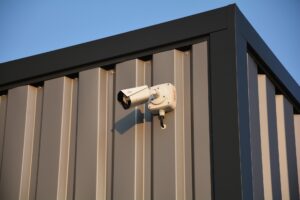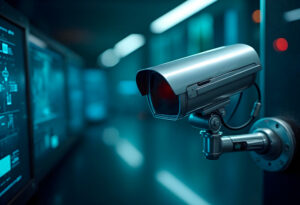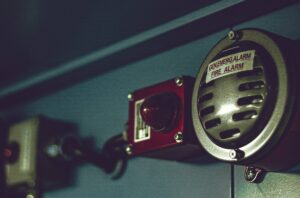Fire alarms play a vital role in safeguarding lives and property by providing early warning during emergencies. However, their efficiency heavily depends on regular maintenance and timely inspections. Without a comprehensive checklist to guide these efforts, oversights can lead to catastrophic failures.
This blog outlines an in-depth fire alarm system maintenance checklist designed to keep your property protected, prevent malfunctions, and ensure compliance with safety standards.
Key Takeaways
- Regular maintenance of fire alarm systems prevents costly malfunctions and ensures proper functionality during emergencies.
- A well-structured checklist ensures all components, from sensors to control panels, are routinely inspected and operational.
- Professional services are crucial to addressing technical issues, as DIY approaches may lead to non-compliance or faulty systems.
Overview
A comprehensive fire alarm system maintenance checklist includes detailed checks of all system components, ensuring compliance with regulations and peak functionality. This process not only addresses immediate safety concerns but also guarantees the longevity of the system. Utilising a well-structured fire alarm system maintenance checklist and professional assistance is indispensable in maintaining accuracy and addressing complex issues.

Components of a Fire Alarm System Maintenance Checklist
Weekly Visual Inspections
Regular visual checks are essential to identify obvious issues, such as physical damage, dirt accumulation, or tampering.
- Key Tasks:
- Inspect control panels for error codes or power issues.
- Verify visible wiring and sensors for any signs of wear.
Example: A dusty smoke detector may fail to respond to smoke particles during a fire, emphasising the need for frequent visual inspections.
Monthly Functional Testing
Monthly testing ensures the alarm’s ability to detect and respond to potential fire hazards.
- Key Tasks:
- Test smoke detectors using test buttons.
- Check that all sirens and strobes function correctly.
- Inspect batteries for corrosion or low charge.
Implication: Faulty batteries are one of the most common causes of fire alarm failures. Monthly testing mitigates this risk.
Quarterly System Inspections by Professionals
Professional inspections go beyond surface-level checks, delving into the technical components of the system.
- Key Tasks:
- Inspect control panel programming for errors.
- Verify that sensors communicate effectively with the system.
- Test signal transmission to emergency services.
Insight: While DIY inspections might identify surface issues, professional maintenance ensures regulatory compliance and system longevity.
Annual Comprehensive Testing and Servicing
Annual maintenance involves a thorough examination of the entire system to ensure optimal performance.
- Key Tasks:
- Conduct full-system activation tests.
- Replace outdated or worn components.
- Confirm compliance with local safety codes.
Perspective: Investing in annual servicing saves long-term costs by preventing breakdowns and maintaining compliance with safety regulations.
Employee Training and Awareness
Educating building occupants about the fire alarm system enhances overall safety and ensures prompt and correct responses during emergencies.
- Key Tasks:
Conduct Fire Drills: Regular drills help occupants become familiar with evacuation procedures.
Instruction on Manual Call Points: Teach occupants how to activate the fire alarm manually in case they detect a fire before the system does.
Emergency Response Training: Provide guidance on how to respond when the alarm sounds, including evacuation routes and assembly points.
Example: During a fire drill, employees may learn that a designated exit is obstructed, prompting a revision of the evacuation plan.
Environmental and Building Changes Review
Changes to the building or its environment can affect the fire alarm system’s effectiveness.
- Key Tasks:
Renovation Assessments: After any building modifications, assess whether additional detectors or alarms are needed.
Occupancy Changes: Adjust the system to accommodate changes in how spaces are used, such as converting storage areas into offices.
Environmental Factors: Monitor for new sources of dust, humidity, or temperature fluctuations that could impact system performance.
Insight: Installing new equipment that emits steam or dust may require repositioning detectors to prevent false alarms.
Understanding Fire Alarm System Components
To effectively maintain your fire alarm system, it’s important to understand its key components and how they function together.
Control Panel: The brain of the system, it monitors inputs and controls outputs. It processes signals from detectors and activates alarms.
Detectors:
Smoke Detectors: Sense smoke particles in the air using optical or ionisation methods.
Heat Detectors: Respond to changes in temperature or rate-of-rise in heat.
Manual Call Points: Allow occupants to manually activate the alarm in case they spot a fire.
Alarm Devices: Include sirens, bells, and strobe lights that alert occupants to evacuate.
Communication Systems: Facilitate the transmission of signals to monitoring centres or directly to emergency services.
Example: Knowing that your system uses ionisation smoke detectors helps in understanding that these detectors are more responsive to flaming fires but may be less sensitive to smouldering fires, impacting how and where they should be installed and maintained.
Legal and Regulatory Compliance
Fire safety regulations are established to protect building occupants and property. Non-compliance can result in penalties, legal action, and increased risk during emergencies.
Key Regulations to Consider
Local Fire Codes: Specific requirements for installation and maintenance that vary by region.
National Standards: Such as those set by the British Standards Institution (BSI) in the UK.
Insurance Requirements: Insurance policies may have specific stipulations regarding fire alarm maintenance.
Implication: Failure to adhere to the fire alarm maintenance schedule outlined in your local codes can lead to fines or invalidate your insurance coverage in the event of a fire.
At Ai-Security, we understand the importance of a well-maintained fire alarm system in protecting lives and property. Our experts provide thorough inspections, testing, and maintenance services tailored to your needs. Don’t risk your safety with DIY fixes—trust the professionals at Ai-Security to handle your fire alarm maintenance.
Visit us at Vigilant House, 1155 London Rd. Leigh-on-Sea, SS9 3JE, or call 01702 476700 today to schedule an appointment. Let us take the burden off your shoulders with our comprehensive fire alarm system maintenance checklist service.

Conclusion
Maintaining a fire alarm system is a vital responsibility that ensures safety and compliance. By following a structured maintenance checklist, you protect your property and loved ones from potential fire hazards. However, professional maintenance is essential for a thorough approach. Don’t risk relying on DIY efforts; consult experts like Ai-Security for guaranteed system performance.
Call us at 01702 476700 or visit us at Vigilant House, 1155 London Rd., Leigh-on-Sea, SS9 3JE, to schedule a comprehensive fire alarm maintenance service. Let us keep you safe!
FAQs
Q: Why should I follow a fire alarm system maintenance checklist?
A: Regular maintenance ensures your system is functional, prevents malfunctions, and complies with safety regulations.
Q: Can I maintain my fire alarm system without professional help?
A: While basic checks can be done personally, professional inspections are critical for identifying hidden issues and ensuring compliance.
Q: How often should a fire alarm system be inspected?
A: Weekly visual checks, monthly functional tests, quarterly professional inspections, and annual comprehensive servicing are recommended.
Q: What happens if I ignore fire alarm maintenance?
A: Neglecting maintenance can lead to system failures, increased liability, and potential non-compliance with legal standards.
Q: How do I know if my fire alarm system needs professional servicing?
A: Indicators such as frequent false alarms, error codes, or components not functioning properly signal the need for expert assistance.












